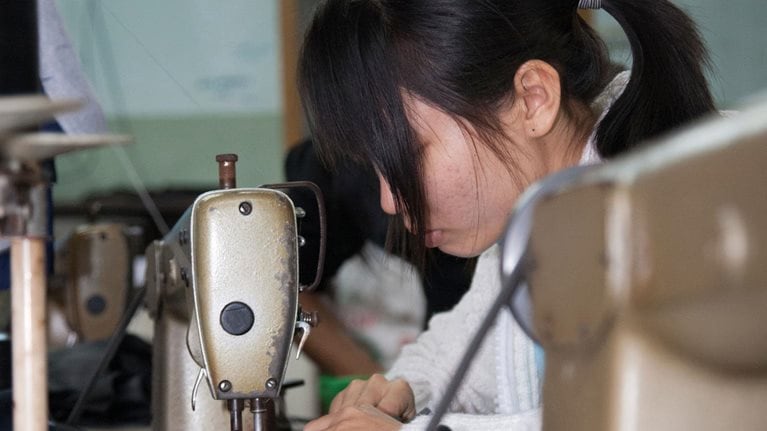Vietnam’s power system is at an inflection point. Over the past five years, load has increased at an average of about 10 percent a year, a staggering pace. Keeping up with the rapidly growing demand for power will require bringing a significant amount of additional capacity online. By Electricity of Vietnam’s (EVN’s) estimates, this upgrade to the power system will require Vietnam to attract more than $150 billion in new capital investment into the country. With the government nearing its designated debt ceiling, questions remain about how Vietnam will manage to spur sufficient levels of capital investment in the power sector and avoid power shortages, especially in the South, where reserve margins are already razor thin. How Vietnam meets this challenge will have far-reaching implications for its GDP growth potential, trade balance, environmental performance, and energy security.
Stay current on your favorite topics
The McKinsey Global Institute report Sustaining Vietnam’s growth: The productivity challenge provides a road map for improving labor and capital productivity to take Vietnam’s economic performance and growth to the next level.
We recently completed a detailed review of the Vietnamese power sector, evaluating alternative pathways to meet the expected load growth. The question is: Which pathway meets Vietnam’s power needs at the lowest cost, with the best opportunity for capital formation, the least impact on public budgets, and the least risk?
Our review of available market data and interviews with industry experts suggests that, even without factoring in externalities, renewables have become the cheapest form of new power generation in the country on a levelized cost of electricity (LCOE) basis (Exhibit 1). The trend is fueled by Vietnam’s remarkable natural endowments of solar and wind power combined with a significant drop in the capital costs of solar and wind over the past five years (75 percent decrease in solar costs and a 30 percent decrease in the cost of wind), which have made the LCOE for new renewables cheaper than traditional thermal generation. Another advantage of renewables is that they are lower risk. They also can be built more quickly versus traditional sources of generation and located more flexibly to meet Vietnam’s load-growth requirements. Additionally, Vietnam’s extensive hydro-generation capacity and the potential to add flexible natural-gas generation, backed by extensive local gas reserves, allow renewable integration at low cost, compared with many markets.

Although the cost decreases may slow in the coming years as wind and solar technologies mature, there is consensus in the market that renewable capital costs will continue to fall. The continued downward trajectory should push renewables to a point where they become a cheaper source of electricity than existing conventional thermal power sources. And, of course, more renewables would support much cleaner national emissions, significantly fewer imports, and substantially more local jobs.
This downward trend in renewable costs combined with Vietnam’s power needs creates an opportunity. In this article, we will discuss the keys to unlocking a Renewables-Led Pathway, including creating suitable market conditions for renewables development, building the country’s capabilities to deliver large-scale renewables projects in partnership with capable international developers, and expanding natural-gas generation’s role in the country’s power plan.
Vietnam’s current power situation
Spurred by a growing economy and relatively low electricity tariffs, Vietnam’s power sales grew at an average of 11.5 percent per year between 2010 and 2015. To satisfy this growing demand, Vietnam relies on a fleet of generating assets with an installed capacity of about 40 gigawatts. According to EVN’s 2016 annual report, 38 percent of that capacity came from hydropower, 34 percent from coal-fired plants, and 21 percent from natural gas.
The delivered-power mix varies year to year, with the exact ratios largely contingent on annual rainfall totals and the associated impact on hydropower capacity factors. Coal provides the primary baseload power in the North, while natural gas serves as the primary baseload power in the South. The strong grid infrastructure in Vietnam consists of about 450,000 kilometers of distribution lines, connecting almost 100 percent of the nation to reliable electric power, and about 25,000 kilometers of transmission lines, including interconnections with China and Laos (used primarily for imports) as well as Cambodia (used primarily for exports).
The market for renewable solar and wind power in Vietnam remains in its infancy, even though Vietnam manufactures 3.4 gigawatts annually for export to Europe and the United States. Vietnam has tremendous natural endowments—four to five kilowatt-hours per square meter for solar and 3,000 kilometers of coastlines with consistent winds in the range of 5.5 to 7.3 meters per second create advantaged solar and wind generation for Vietnam. However, the country has only about 200 megawatts of grid-scale, renewable solar and wind capacity online, primarily through wind projects.
Vietnam’s current power plan requires an investment of roughly $150 billion by 2030 in additional generation assets and grid infrastructure. The power-generation investments focus largely on coal (about 45 additional gigawatts by 2030) and, to a lesser extent, renewables (18 gigawatts by 2030).
Would you like to learn more about McKinsey in Southeast Asia?
Exploring the energy options
We compared two potential pathways for Vietnam, shown in Exhibits 2 and 3. The government’s current Power Master Plan (version 7, revised, referred to in the rest of the article as the Current Plan)1 defined the base case. The alternative Renewables-Led Pathway was the optimal low-cost case; the low-cost case builds and dispatches capacity to meet hourly demand across the next 15 years under an updated set of market conditions—specifically, a bankable power-purchase agreement (PPA), economic dispatch of hydro resources, and build-out of gas infrastructure in Vietnam. McKinsey’s models for the scenarios indicate quite different potential futures for Vietnam’s power sector:
- Current Plan. The Current Plan relies heavily on foreign coal (57 percent of total generation and 47 percent of total capacity by 2030). The current coal-plant build-out is well behind schedule, reflecting the relative cost and complexity of coal-plant construction, creating cost escalation and reliability risks.
- Renewables-Led Pathway. This scenario includes wind and solar build-outs (39 gigawatts and 61 gigawatts by 2030, respectively) five times larger than what is now planned and supplemented by natural gas and battery storage to help firm renewables generation.


A key driver behind the divergence in these cases is a higher cost of capital for renewables in the Current Plan. Vietnam needs to be able to attract new capital into the market to meet the country’s energy requirements. A nonbankable PPA, like the one that is currently in place in Vietnam, would require renewables projects to be financed entirely with equity. Discussions with market experts suggest that the cost of equity for renewable power-sector projects in Vietnam ranges in the high teens and is based largely on Vietnam-specific adjustments to the risk-free rate and market risk premium. In contrast, traditional coal plants in Vietnam have historically benefited from very attractive contract terms.
This higher cost of capital is, in many respects, a showstopper for potential renewable developers, limiting Vietnam’s ability to attract significant foreign direct investment. However, it is important to note that the worldwide trend with respect to cost of capital is different from the current situation in Vietnam. In markets that have embraced renewable development, renewables are generally seen as less risky investments, which are rewarded by lenders with a much lower cost of capital. Conversely, lending terms for thermal assets, especially coal assets, are becoming stiffer as investors worry about the potential for stranded assets and unfavorable policy shifts away from carbon-generating assets. Indeed, in many parts of the world, renewables projects have a significantly lower cost of capital than do coal projects. Vietnam faces a capital-formation challenge: domestic funding of thermal-generation development by privately owned banks will become more challenging; additional measures such as guarantees or policy lending from state-owned banks might be required. In contrast with a competitive PPA structure, renewables development could attract significant domestic and foreign direct investment.
Cheaper, cleaner, more secure
Our research suggests that along three critical dimensions—cost, cleanliness, and security—the Renewables-Led Pathway outperforms the Current Plan (Exhibit 4).

Cheaper
Following the Renewables-Led Pathway would save Vietnam 10 percent in overall power costs between 2017 and 2030. The key driver of this cost reduction is the savings in fuel costs resulting from a move away from high levels of fuel-intensive thermal generation. Such savings would grow over time as the capital expenditures amortized. To illustrate this fuel cost savings, our analysis suggests that if load growth were to remain flat after 2030, the country would save an additional $45 billion in fuel costs between 2030 and 2040.
Cleaner
The starkest difference between the options is in the relative emissions. The Renewables-Led Pathway would yield 1.1 gigatons fewer greenhouse-gas emissions and 0.6 megatons fewer particulate emissions between 2017 and 2030 than the Current Plan. To help put this in perspective, Vietnam’s total greenhouse-gas emissions in 2014 were 270 megatons—on a path to almost double to 475 megatons by 2020. The Renewables-Led Pathway would also deliver significantly lower sulphur-oxide and nitrogen-oxide emissions.
The case for change is clear: in 2017, Vietnam ranked as the 47th largest economy but the 27th largest emitter of greenhouse gases. The significant increase in emissions that is inevitable in the Current Plan would have serious impact on Vietnam’s air quality, which is already among the worst in Southeast Asia. Today, the 20 coal-fired power plants in the northern region that surround Hanoi consistently drive the air quality below the World Health Organization’s threshold for acceptable air quality. In 2017 alone, Hanoi was in violation of the World Health Organization’s regulations for 257 days; in 2016, Hanoi averaged more than 100 grams per cubic meter of PM10 and almost 50 grams per cubic meter of PM2.5,2 five times the WHO health limits. The WHO estimates that in 2016, more than 60,000 deaths in Vietnam were linked to these air-pollution levels. Already affected, further deterioration in air quality would have an increasingly detrimental effect on health and economic productivity. The Renewables-Led Pathway would drive a dramatic improvement in health and economic productivity versus the current plan.
More secure
In addition to being cleaner and cheaper, the Renewables-Led Pathway would make Vietnam more secure in three different ways.
Fuel security
The Current Plan would require 37 billion million British thermal units of total fuel, 49 percent of which is anticipated to come from imports. In contrast, the Renewables-Led Pathway would rely on 28 percent less total fuel and 60 percent fewer imports, significantly reducing Vietnam’s reliance on fuel imports—and fossil fuels, more broadly.
Commodity-price security
By 2030, 74 percent of generation in the Current Plan will be tied to coal or gas, which significantly increases exposure to commodity risk. By comparison, 49 percent in the Renewables-Led Pathway electricity will be tied to commodity security. For instance, a 10 percent rise in fuel costs would increase the forecasted savings in the Renewables-Led Pathway by $7 billion between 2017 and 2030 (Exhibit 5).

Societal implications
The Renewables-Led Pathway could create an additional 465,000 jobs between 2017 and 2030, as renewable investment would tend to create more jobs (approximately twice as many) for the same level of investment in the Current Plan.
Addressing concerns about large-scale renewables investment
The government has had valid concerns about investing in renewables at scale. Our analysis shows these concerns can be mitigated.
Integration
Power-system planners often worry about the possibility that increases in renewable power will lead to stranded thermal assets. However, under the Renewables-Led Pathway, thermal-asset utilization will remain high (about 65 percent) for existing facilities because of anticipated load growth. This means existing thermal sources should remain used and useful for an extended period to time. Moreover, Vietnam’s substantial hydropower capacity reduces the challenge of integrating intermittent renewables, such as wind and solar.
Our analysis also indicates no renewable curtailment by 2030 in the Renewables-Led Pathway, as flexibility of hydro resources, local battery-storage additions, and fast-ramping gas can effectively manage renewables intermittency. To account for required grid build-out associated with renewables, the analysis builds in an additional $83 per kilowatt of transmission-infrastructure costs. These costs amount to an additional $5 billion of investment between 2017 and 2030 to ensure 100 percent of the renewable energy is deliverable to major demand centers.
Perception that renewables are more costly, but cleaner, alternatives
Although still widely held, the view that renewables are cleaner but more costly than traditional sources has become increasingly challenged in recent years—in many markets, including Vietnam, new-build renewables are cheaper and lower risk to construct than is traditional coal. The rate of innovation in renewables design and manufacturing, including manufacturing in Vietnam, continues to reduce renewables cost by approximately 10 percent annually, so the view that renewables are more costly will become even less accurate over the next few years as renewables become cheaper than existing coal-fired assets.
Lack of experience with renewable asset development and operation
Building the capabilities to support a mature renewables industry in Vietnam will come with investment at scale. Vietnam is already a sizable manufacturer of solar panels. Vietnam already has a well-developed, reliable power grid. In general, the capabilities required to build and operate renewables are easier to build than are those required for thermal assets (Exhibit 6), supporting much stronger and broad-based local job creation.

Potential negative impact of renewables on related domestic industries
In both the Current Plan and Renewables-Led Pathway, forecasted domestic coal consumption will outpace production (Exhibit 7). Therefore, the Renewables-Led Pathway would not be likely to have an adverse impact on Vietnam’s domestic coal industry but would instead limit the amount of coal imports required to meet demand. And, the Renewables-Led Pathway will lead to lower power costs for energy-intensive domestic industries.

A way forward for Vietnam
There is no silver bullet that will solve Vietnam’s energy challenges. The ability to meet rapidly growing demand while keeping costs low will depend on the creation of financial and regulatory infrastructure that make the market attractive to capable renewables developers. In addition, planners should explore demand-side reduction- and load-control measures, imports through interconnections with China and Laos, and opportunities to make natural gas a more important part of the energy mix.
To make a market for renewables that is attractive enough to encourage project developers to build at the scale required to meet Vietnam’s electricity needs, the government could consider the steps discussed below.
Develop a more attractive power-purchase agreement (PPA) for renewable energy
As currently drafted, Vietnam’s solar and wind PPA is unlikely to spur meaningful investment. It puts too many risks on the shoulders of project developers. Several potential project developers interviewed said the risks left to them would make raising capital extremely difficult. Exhibit 8 compares the risks faced by a utility-scale renewables project with those historically experienced in thermal-plant development. Whereas all elements of a thermal project have historically been subject to negotiation, the current renewable PPA comes as a “take-it-or-leave-it” option, which limits the ability of project developers to offset key project risks. A bankable PPA is a key factor in opening the door to capital investment at the level needed to build a mature renewables industry in Vietnam.

Clarify the status of renewable-power tariffs after July 2019
To be eligible for the current feed-in tariff, approved solar projects must reach their commercial operation dates by the end of 2020. This leaves developers a tight window in which to execute a project. Few projects are situated to execute against this timeline. For instance, despite the fact that about four gigawatts of solar projects have been added to Vietnam’s Current Plan, it is estimated that only a fraction have actually received financing. Experts familiar with the market agree that the vast majority of these projects will never be built. Further exacerbating the limited progress to date is that the deadline gives developers little incentive to act for fear that they might miss the deadline and wind up ineligible for the feed-in tariff.
Standardize and streamline the project-approval process
Building renewables at scale requires all parties involved to be comfortable with a transparent, replicable, and proven project-approval process. Experts familiar with the current project-approval process in Vietnam noted that it is confusing, opaque, and circuitous and requires an unusually large amount of stakeholder engagement with a variety of government agencies. Finding a way to streamline this process and encourage confidence for would-be investors will be critical to developing a more mature renewables industry.

Sustaining Vietnam’s growth: The productivity challenge
Engage the private sector
Given the scale of investment required to keep up with Vietnam’s anticipated load growth and the government’s limited ability to raise additional capital, private-sector investment will play a central role in financing the development of additional power-generation assets. The concessionary financing that Vietnam has relied on historically will not be on the scale required to meet Vietnam’s power-sector needs. The best way to ensure private-sector interest is to incentivize investment sufficiently through a viable feed-in tariff, derisked PPA, and transparent project-approval process.
Recruit experienced developers to build and to teach
The goal should not be just attracting capital. The first large-scale renewables projects should be developed by capable international developers. In addition to guaranteeing on-time delivery, thereby reducing the risk to EVN, these experienced developers should commit to training local installation companies in a wide range of capabilities (such as project development, construction, and operations and maintenance). Teaching Vietnamese installation companies these skills will reduce the capital costs associated with building subsequent renewables plants, lead to job creation in the renewables sector, and give Vietnam a reputation as an attractive place to make a renewable-energy investment.
Make natural gas a more important part of the power-development plan
It might seem counter-intuitive to say that developing a new source of fossil fuel is a key part of this proposed Renewables-Led Pathway, but fast-ramping gas plants are an important part of being able to firm renewable assets. Vietnam has very attractive local natural-gas resources. Additionally, the LCOEs for combined-cycle (not fast-ramping) plants are cost competitive in Southern and Central Vietnam, where gas infrastructure is already largely in place. Finally, gas adds a hedge against the risk of price volatility embedded in global coal prices.
Invest in upgrading Vietnam’s transmission
Making the investment in upgrading Vietnam’s transmission grid, including additional domestic and international interconnections, will have the benefit of increasing the overall flexibility of the system and allow for smoother renewable integration.
Toward a stronger energy future
Building a cheaper, cleaner, and more secure energy future for Vietnam will not happen overnight. Other markets further along in development of renewable power greatly benefited from the support of the government. Without exception, governments played a critical role in jump-starting the market, generally through legislation or a public commitment. In addition, governments often helped to accelerate investment through strong incentives and a well-planned, transparent project-approval process.
Vietnam can take several actions now to help lay the groundwork for renewables development:
- Design an easy-to-navigate, transparent, and replicable project-approval process.
- Provide clarity about the future of renewables tariffs after June 2019.
- Conduct a detailed grid-capability assessment, including the assessment of potential optimal sites for new generation assets, to understand exactly what it will take to integrate renewables.
- Accelerate renewable-energy projects, especially those by program sponsors that have enough scale to activate the market and build capabilities (delivering gigawatts versus megawatts).
- Begin serious discussions with potential large private-sector investors looking at opportunities to build renewable capacity in Vietnam. The country needs partners that can commit $50 billion to $150 billion in new capital.
Whether the government decides to follow a Renewables-Led Pathway, the country will need to take action soon or risk potential issues with the power system. Without significant new capital investment and a shift in resource mix, Vietnam’s power system will be at risk.
This is a watershed moment for Vietnam. Renewables are the lowest-cost option for Vietnam to meet its energy needs. Pursuing a Renewables-Led Pathway offers the country the prospect of less expensive, cleaner, and more secure energy. Failure to move forward could leave an estimated $23 billion of value on the table between now and 2030, and more in the years to follow. More important, it would leave Vietnam vulnerable—not only to higher costs and emissions but also with a less secure energy future and being at a global disadvantage to its peers. Successfully executing a Renewables-Led Pathway will lead to domestic and international interest and significant capital investment in clean-energy technologies.


